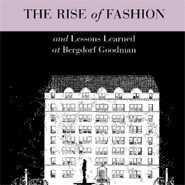
By Ira Neimark Part 4: Retail Common Sense Style, Luxury, Quality and Value Style I have been asked any number of times, particularly by men of means, why should anyone want to pay the expensive prices for a suit, shirt or necktie? Whenever that question comes up, I am reminded of my early days at Bonwit Teller. Needless to say, as explained in earlier chapters, I wore the necessary clothes to get through the workday, whether as office boy in the president’s office or, later, handling more advanced responsibilities in higher positions. I was aware then, by watching young executives who worked in Bonwit Teller, particularly those who had a sense of style, what was required to fit in. They seemed to be properly dressed for whatever the occasion. Some, I became aware of, seemed to dress with more style than others. Tom Lee, the creative genius at Bonwit Teller who invited Salvador Dalí to do the Fifth Avenue windows, dressed impeccably and was also an early guide. Esquire magazine also recommended the proper attire for the young men returning from World War II. With that background, it seemed effortless to know what to wear in business or social occasions. Luxury As I became aware of the type of clothes that were required to keep pace with my advancing business career, I had to find a men’s store that had what I needed at prices that I could afford. During the '50s and '60s, there were men’s stores that had good-quality clothes at moderate prices in New York and other major cities. Wallachs was the store I chose. One reason was that the clothes looked right. The other reason was that they allowed you to pay one-third of the bill each month, which at that point, I could afford. As I moved up to Bergdorf Goodman, I recognized the same desire for men to be well dressed that I experienced in my early days at Bonwit Teller. I also found a class of successful businessmen who selected their cars and sporting equipment the same way—they wanted the very best their money could buy. They wanted luxury as a lifestyle. There was another class of successful men who were comfortable with conservative clothes at more modest prices. Both, as we used to say, were “good citizens.” I decided that the businessman interested in luxury clothing was the customer of choice for building Bergdorf Goodman’s men’s business. Thus began my learning the men’s luxury market, from London, Paris, and Milan. My exposure to Hermès, Turnbull & Asser, Charvet, Brioni, Luciano Barbera, and Kiton, to name a very few of the very best, set a standard of luxury that I would follow for the rest of my career. Quality To learn more from the principals of all the luxury markets about their workmanship and availability for Bergdorf Goodman’s Men’s Store, I raised my personal objectives as well as the goals for the store. I visited nearly all the factories of every luxury collection to be carried at Bergdorf Goodman. I won’t go into too much detail about each of the men’s fashion houses that I visited, other than to say, each and every one involved, without exception, were exceptional artisans who brought passion and a commitment to produce the very best. It was imperative to me to have the best workmen and women for design, tailoring by hand, finishing and dyeing or whatever specialty was required to turn out a quality product for the apex of the luxury market. I also learned in men’s clothing that correct fit is paramount. In shirts, the correct collar style defines each luxury retailer. Men’s neckwear, particularly Hermès, requires such rigid inspection that any number of ties would be discarded in order to achieve perfection. Producing fabrics at Luciano Barbera in Biella, Italy, left some Australian wool producers with the mistaken impression that their wool was cashmere, it was so finely woven. Value In life, every man has to decide what it is that represents who he is. Much of that can be projected by where he buys his clothes. In addition to Wallachs, mentioned earlier, there was also Weber & Heilbroner and others—now all gone. Brooks Brothers and J. Press are some of the great retailers that have taken their place. Paul Stuart, another wonderful retailer, would be considered upscale and updated classic. A man wearing Paul Stuart, Brooks Brothers or J. Press can be sure that he is wearing the proper clothing projecting his personality as upscale, somewhat conservative, knowing what he is wearing is clothing of good value. A man wearing Hermès, Turnbull, or Charvet can feel comfortable that he is projecting the image, possibly conservative, but knowing that he is wearing the best quality his money can buy for style, value, fit and longevity. LESSON LEARNED There are successful men whose background leaves them comfortable with conservative machine-made clothing that fits them reasonably well and projects the image they feel comfortable with. There also are men who appreciate the best restaurants, hotels, resorts and clubs who feel comfortable wearing what they consider the best clothes. It is these men who carefully observe what others are wearing in order to determine their taste level. Both are right. It is the customer looking for the best quality with value built in that Bergdorf Goodman’s Men’s Store targeted as their customer with great success. Neimark, Ira. The Rise of Fashion and Lessons Learned at Bergdorf Goodman, 1st Edition. © 2011 by Fairchild Books, a division of Fairchild Fashion Media. Reprinted by permission of Fairchild Books, a division of Fairchild Fashion Media. This excerpt has been adapted for style.
